The re-mediated book: Toast at Atelier Salzamt Linz
The shape of books changes throughout history, reflecting institutional paradigms. Physical supports interface with institutional archiviation and distribution processes. And right at the center of Toast: Zur Erweiterung des Buchformats [Expanding the Book Format] – an exhibition curated by Josseline Black and Vincenzo Estremo for Atelier Salzamt Linz in Austria – is the permeability of the book concept. We passed from papyrus to pergamon to manuscript to type-set books, and now we’ve entered the digital era. However, the majority of books are still in printed form, and the majority of readers are still buying paper books: we are in a transition period. We are questioning the shape, function, and changing impact of books on our knowledge. We are ascertaining our relationship to information, to ourselves and to the collective sphere as “readers”. The agency of the reader lies in articulating a narrative. In the context of contemporary art and artist books, we are interrogating the function of books and their relationship to an audience. Is the art book an art piece, is it the sum of personal research, or is it an evolving container for external inputs? All these questions deal with the transmediality of books and the performativity of readers. The re-mediation of books can make them accessible and free in some way. Under present and historical societal conditions, the book which is not already owned is the property of another body, and the experience of the reader is subject to the temporality of external forces. If we consider the book as a device, we have to contemplate the possibility of re-mediating it. The intersection of montage and curatorship proposes the idea of a book as an exhibition. In addressing the work of the represented artists, the permeability of the book concept emerges. So, the insight of the artists themselves points toward the idea of an increasingly impermanent readability. The concept of book has been taken not as a medium in itself, but as a process.
Sirma Doruk’s piece Social Interface (2015) is a 3-channel video installation, a text-based work. With an audio component that sounds like hasty typing, the three videos together reflect our current state of approval, or how we treat news and facts versus opinions that are Internet-based and use computer-relevant terminology. This piece is about the ways we quickly and thoughtlessly behave online—invisibly and without responsibility.

Sırma Doruk, Social Interface, 2015, (3 channel video installation in 1 channel version, Atelier Salzamt 2016)
Gedske Ramløv, as an artist in residence at the Atelierhaus Salzamt, immersed herself within the traces of historical isomorphisms relating Linz to the Danube. The narrative threads she derived reference Ludwig Wittgenstein’s principle philosophical treatises, and the river’s metaphorical writing upon the felt and actual topography of the city.
In Gulistan, Mehraneh Atashi filmed herself reciting a story by Sa’adi, one of the major Persian poets from the medieval period. He is not only famous in Persian-speaking countries, but has been quoted in Western literature and culture. Sa’adi is widely recognized as one of the greatest poets of the classical literary tradition, for the quality of his writings and for the depth of his social and moral thoughts. Gulistan is mainly in prose, and contains stories and personal anecdotes. The text is interspersed with a variety of short poems, which contain aphorisms, advice, and humorous reflections, demonstrating Sa’adi’s profound awareness of the absurdity of human existence.
The Cool Couple’s Approximation to the West seeks to reveal instances of forgotten pasts through the collection and re-dissemination of historical information, combining photography, drawing, installation, and archiving tactics. These traces of history and memory have been processed through a medium – that of photography – capable of rendering reality and, at the same time, of transforming memorial and archival information into aesthetically pleasing images, with radiant, multi-faceted meanings.
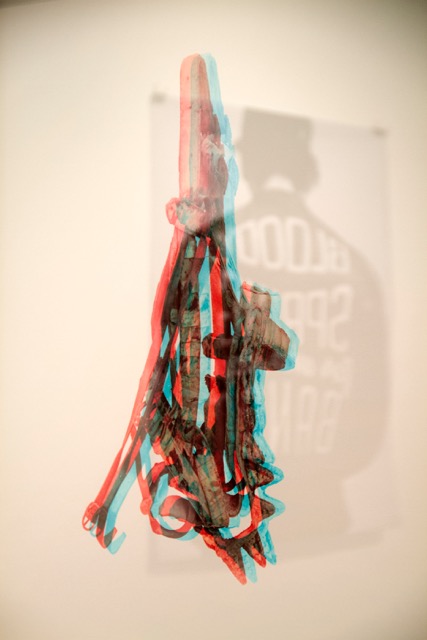
The Cool Couple, Approximation to the West, 2014. (Cossack crownpiece, Tolmezzo #007, Atelier Salzamt 2016)
Ludovica Gioscia took the responsibility of curating the Pizzemblage project, by trying to turn a collective sculpture into a publishing project. Arising from Droste Effect’s project Pizza Box, Pizzemblage is a proper exhibition space. In an hypothetical comparison between the two outcomes, we could say that the Pizza Box is to the Wunderkammer as the Pizzemblage is to a Renaissance studiolo. The Pizzemblage Box holds six slices, realized by six different artists. Its value derives from the participating artists’ work and ability to embellish a fragile exhibition space.
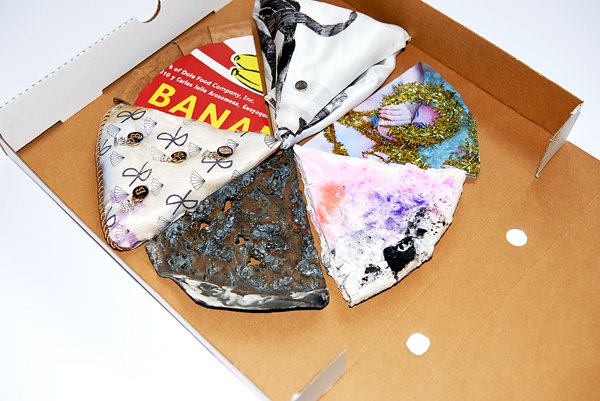
Droste Effect | Pizza Box presents: Pizzemblage. Clockwise starting from the “Banana” slice: contributions by Jebila Okongwu, Alessandro Roma, Robert Melee, Ludovica Gioscia, Jesse Darling, Sarah Baker. Photo credit: Alastair Strong
With Toast, we aim not only at re-mediating ‘the book,’ but also at looking at how books can be relocated from the traditional, institutional context of libraries and bookshops to the exhibition space. In addition, we aim to stage the reader as a performative participant in the creation of a living discourse, by acknowledging the discourse around the book in an exhibition space as the creation of a micro-oral history. This deals with the cultural turn in which the representation of the world became itself a historical document for the acknowledgement of the world. The book is not only a database, but an artifact: every book is the result of a full-spectrum process of witnessing experience, becoming evidence, becoming document, becoming artifact. The construction of that process allowed and allows us to engage with traces of ourselves and the collective sphere. The research behind the product, which is an “art book” in this case, is the real content. Expanding the book, showing what is behind the book, and taking from the book an infinitude of references, images, items, human relationships, and locations means considering the art book not just as an art piece, but as something else. The collaboration between the book as performer and the reader as performer becomes a third performance, that inhabits the space in which meaning is creating, a process partially visible from the outside. Knowledge not performed will die.
Toast - Zur Erweiterung des Buchformats [Expanding the Book Format], curated by Josseline Black and Vincenzo Estremo, is at Atelier Salzamt Linz from February 17 to March 4, 2016.
- The Cool Couple, Approximation to the West, 2014. (detail, Atelier Salzamt 2016)
- Toast library, exhibition view (Atelier Salzamt 2016)
- Mehraneh Atashi, Gulistan, 2011. (video installation, Atelier Salzamt 2016)
- Mehraneh Atashi, Gulistan, 2011. (video installation, Atelier Salzamt 2016)
- Gedske Ramløv, La Simmetria annulla le differenze, 2016. (Detail, Atelier Salzamt 2016)
- Toast library, exhibition view (Atelier Salzamt 2016)
by Vincenzo Estremo
in Focus on Europe
Feb 8, 2016




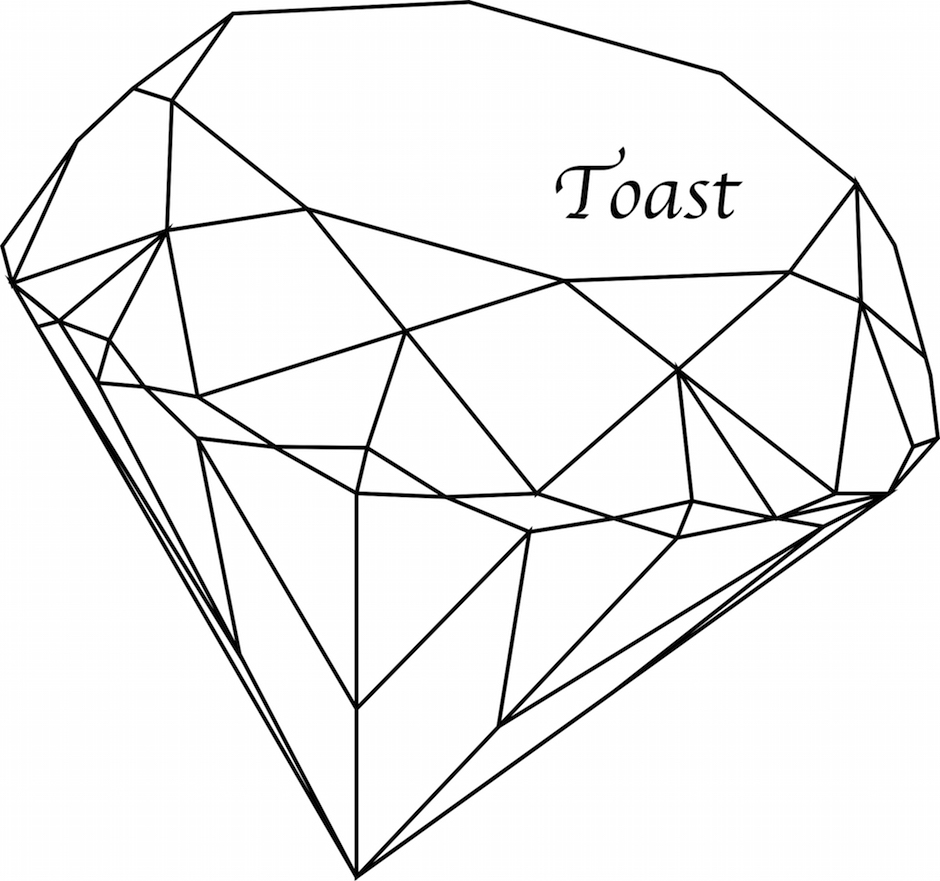
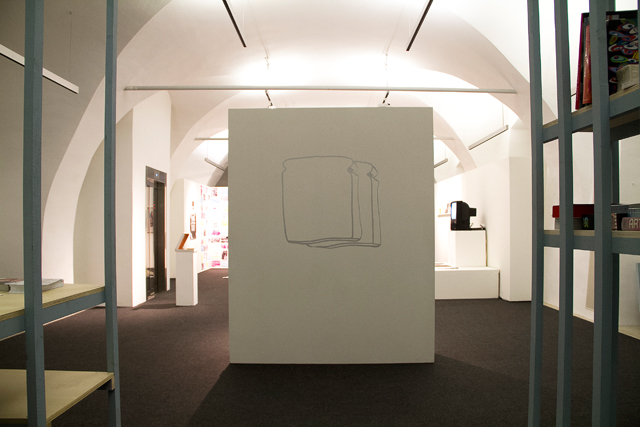
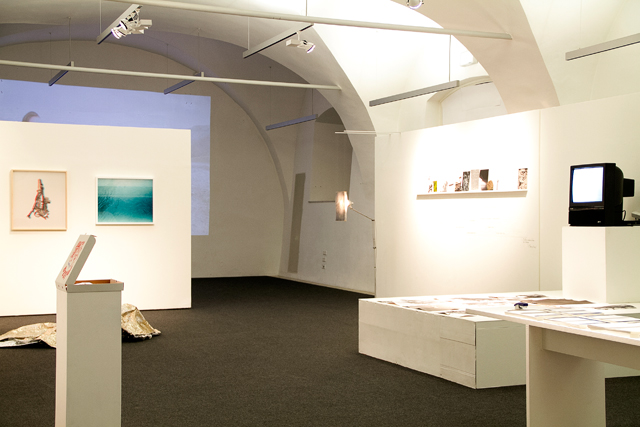
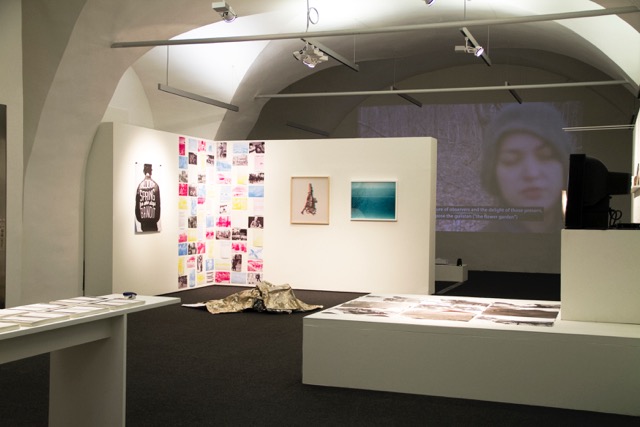
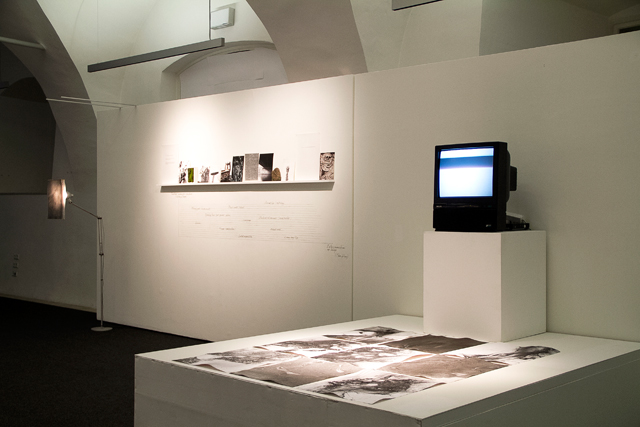
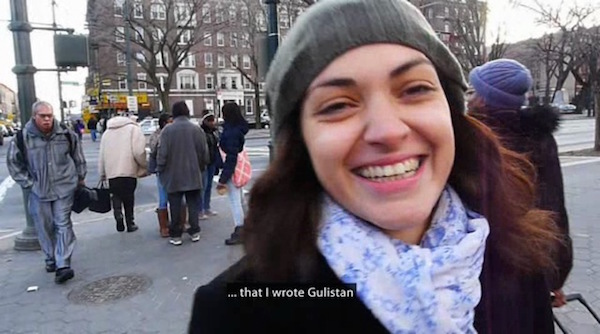
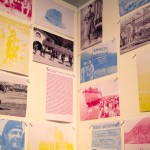
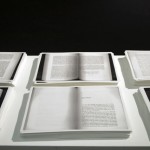
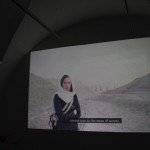
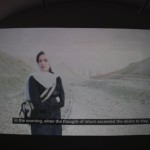
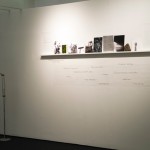
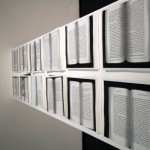








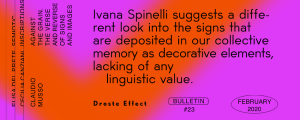
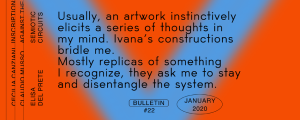
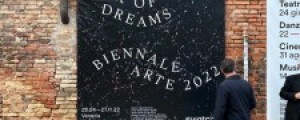

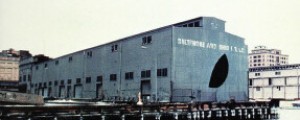






[…] Pizzemblage was exhibited at Toast: Zur Erweiterung des Buchformats [Expanding the Book Format], curated by Josseline Black and Vincenzo Estremo at Atelier Salzamt Linz from February 17 to March […]